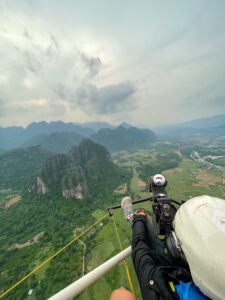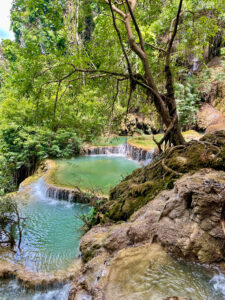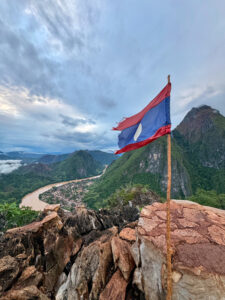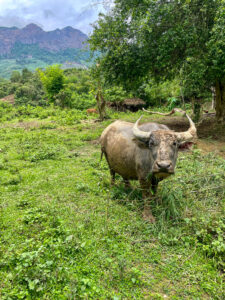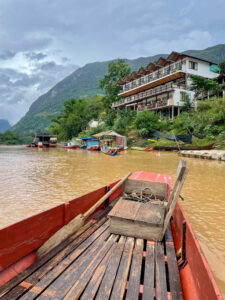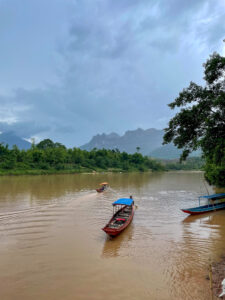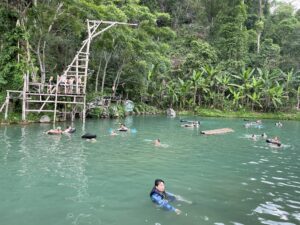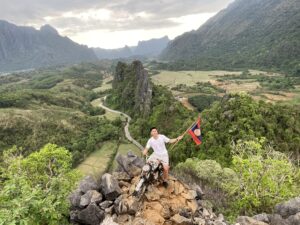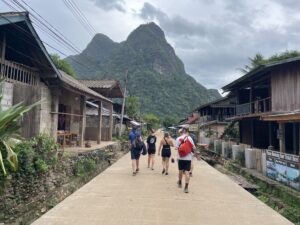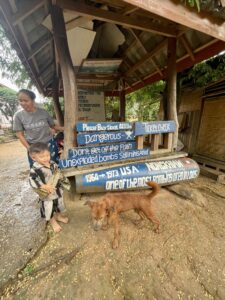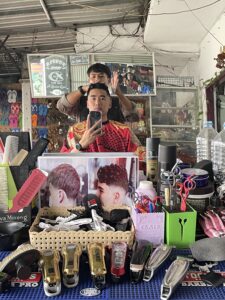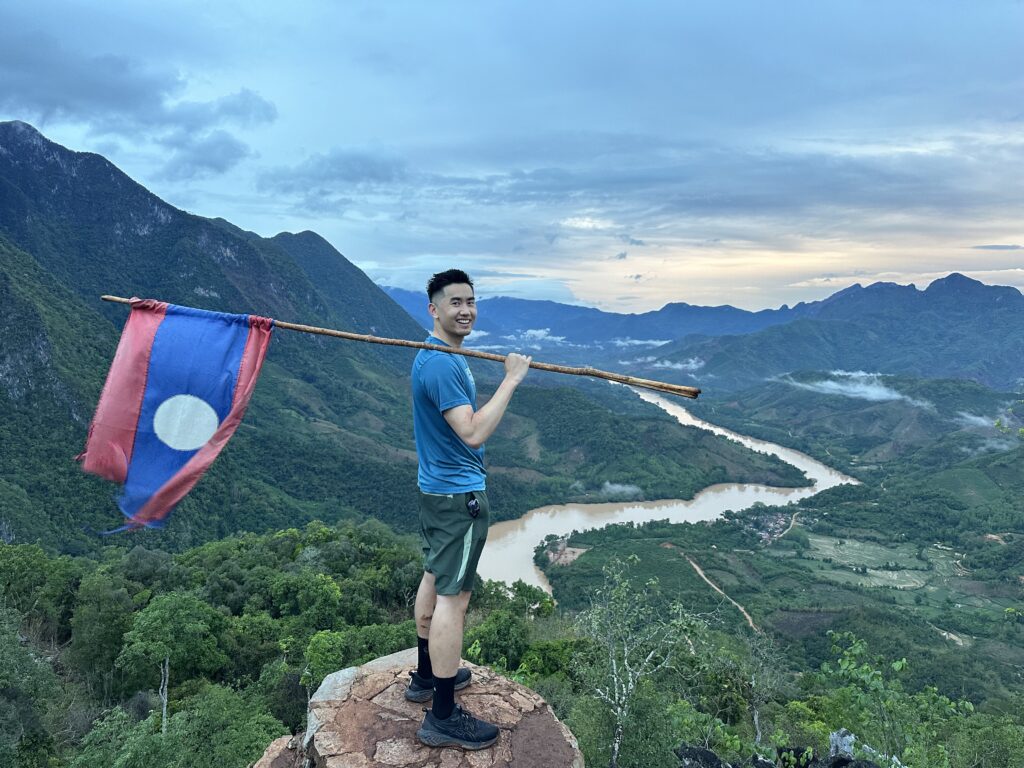
After 9 days travelling Northern Laos, I have concluded that Laos is the most underrated travel destination in the world. Seriously, I bet the average person in the Western world doesn’t ever think about Laos as a travel destination. I surveyed four friends who travelled extensively throughout SE Asia during exchange semesters to Singapore – and even none of them seriously considered Laos as a place to visit! It didn’t even make it into their top 7 countries to visit in the area. I certainly didn’t think of Laos when I was previously in the region in 2016 on my exchange semester.
Eight years later, I returned to the SE Asia region, flying into Laos, still ignorant of all the beauty and adventure the landlocked nation has to offer. Needless to say, I was pleasantly surprised with what Laos offered: a relatively “off the beaten path”, affordable, outdoor adventure that does not feel as touristy as other countries in the area. Granted, I went in slow season (May to October, where it is hot, humid, and wet), and am unusure how busy it gets in peak season.
This post is my call to you to start thinking about Laos! It is a country that features lush landscapes, kind people, an experience that is more untouched than those found in neighbouring countries, and one that would undoubtedly benefit from more tourism.
Below are 21 additional reflections and my 9 day itinerary!
21 Musings.
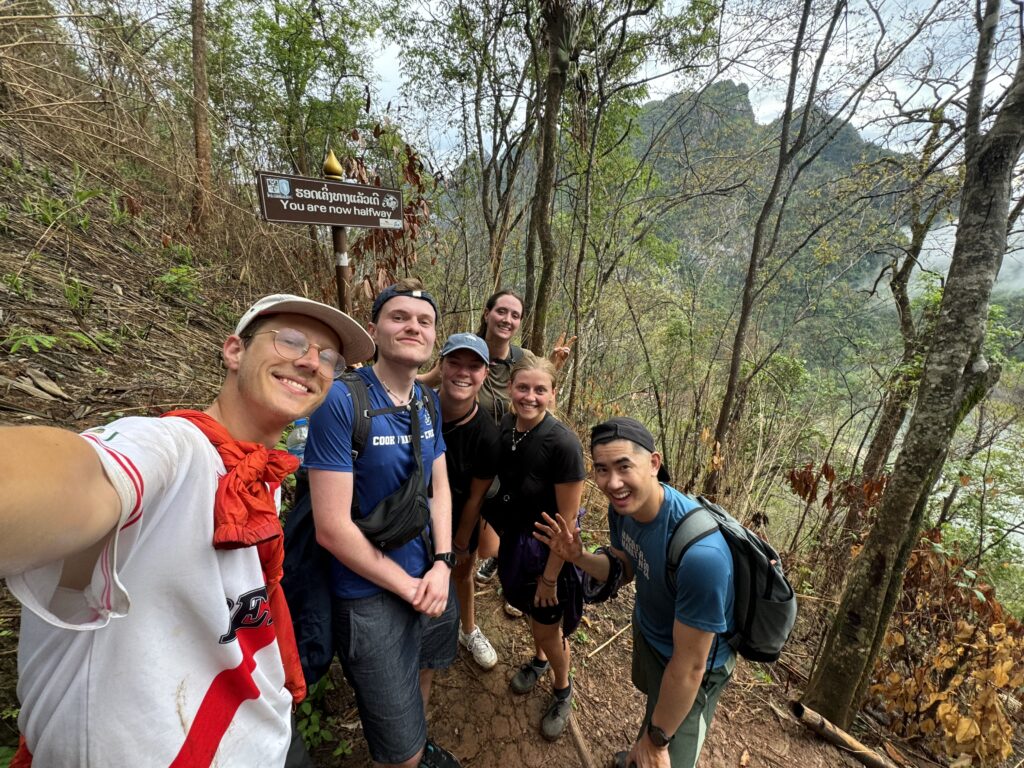
1 – Higher Prevalence of Long-term Travellers in Laos. Interestingly, there is a noticably higher prevalence of “long-term travellers” in Laos, which I define as those travelling for longer than 6 months. For example, on my first day alone, of the five people I met, 4/5 were in the midst of trips lasting longer than 6 months, some over a year! This is different from my experience meeting travellers in other SE Asian countries, like Thailand or Vietnam, which seem to have a much higher rate of travellers on shorter trips. I don’t think this is a coincidence. Why is it more common to encounter long-term travellers in Laos?
2 – Laos, an Intermediary Destination. This is not surprising in view of Laos’ location relative to more appealing travel destinations. Laos is a landlocked nation, bordered by China to the North, Vietnam to the East, Thailand to the West, and Cambodia to the South. Each of these are much more popular travel destinations. I think it is likely that most travellers view Laos as an intermediary destination between what they perceive as “more interesting” neighbouring countries. Those tight on time skip Laos in favour of directly entering more popular neighbouring countries, whereas long-term travellers don’t feel the need to skip Laos, and instead opt to spend some time here between the Thailand and Vietnam legs of their trip. This was the case for the pals I met on the van from Luang Prabang to Nong Khiaw. (Note, however, I do not think this reasoning applies to Chinese visitors, who have easy, affordable access to Laos via the modern Laos China Railway (LCR)).
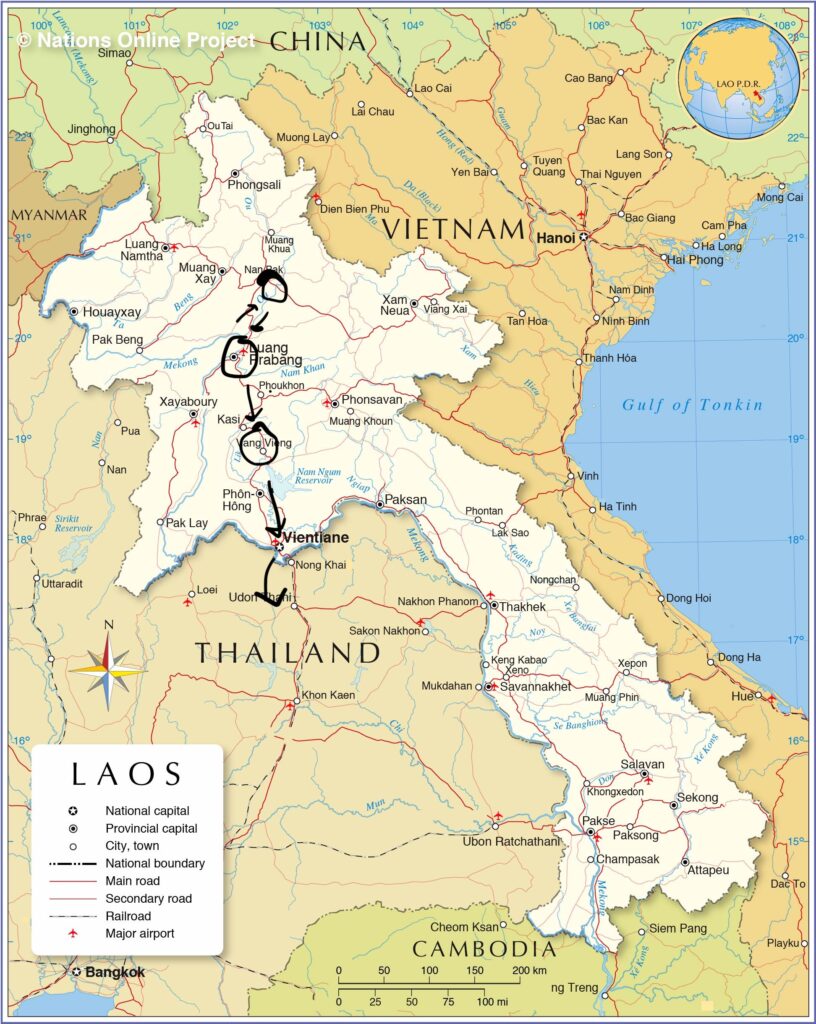
3 – Comparing Laos Travel Experience To its Neighbours. As one of my surveyed friends put it: “Thailand is clearly a party destination; Vietnam a lot more open to tourists, and also known for it’s food and adventure; Cambodia has a fascinating history and Angkor Wat; China, HK, Australia, NZ are quite different from the SE Asia countries; and Philippines and Indonesia have a variety of beautiful islands”. If I have limited time, why would I go to Laos?! I think this view is representative of most. People don’t know Laos and on the surface, nothing stands out about it. After visiting Laos, the main differentiator is that it’s more quiet and peaceful, or “off the beaten path”, while still being affordable and having beautiful scenery.
4 – Okay..so Why did I Visit Laos? I’m neither a long-term traveller nor am I using it as an “intermediary destination”. I also did not do any research prior to going where something in particular piqured my interest. I literally showed up to Luang Prabang airport in Laos, and was googling stuff to do on the Tuk Tuk to my hostel. Simply, Laos is 1 of 6 countries in SE Asia that I haven’t explored before, and I want to check off all SE Asian countries. The other five countries are Cambodia, Malaysia, Brunei, East Timor, and Myanmar. Since Laos was the closest one to Hong Kong, where I was just before, it was a natural next destination on my post-grad trip.
5 – Travel Maths. A more fun answer to the question in #4 is “travel maths”. This is a term I overheard some young travelling Brits use when talking about their SE Asia backpacking experience (Also, I have met very few Canadians and mostly Europeans so far…). I think it’s a term that is popularized through TikTok. My understanding of travel math from that conversation is that once you are already in one country in SE Asia, you might as well visit all of them as it’s pretty much free. Seems logical to me! It is so affordable here! And so easy to get from one country to another. I’m sure searching this term on TikTok results in quality content and a better definition than the one I provided.
6 – I am a Laotian Millionaire. Since 16,000 Laotian Kips roughly equals 1 CAD, this means thinking of items in terms of Canadian dollars is a little trickier than in other countries where the exchange rate of the local currency results in quicker mental math. In addition, ATMs give out cash in denominations of 100,000 KIP, so you can understand that when taking out the equivalent of $200 CAD ($3M KIP), or another reasonable amount to withdraw, you will end up with a fat wad of cash, and in turn, a gigantic wallet. It makes handling your cash more unwieldy, and also means if you have $65 CAD in your bank account, you are a Laotian millionaire.
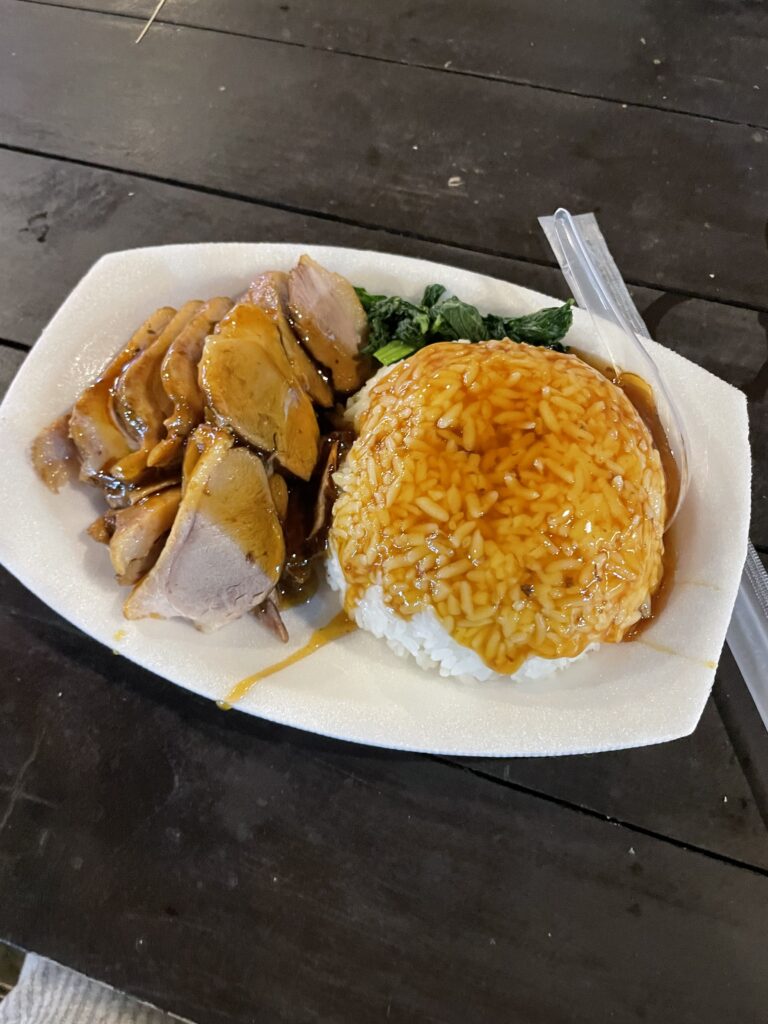
7 – More on Money. On the topic of costs, Laos is a very affordable place to travel, similar to its neighbours. An average dinner (assuming you have the obligatory fruit smoothie) cost me $4-$6. I mostly stayed in hostels, which were each under $15. Travel between places is like under $20. A 60-minute massage costs $10. Admission to hike trails is $2. Heck, I went paramotoring in Vang Vieng for $65 USD and even considered Hot Air Ballooning for $100 USD, which is undoubtedly the cheapest place in the world to get that experience. You could rent a motorbike for under $10CAD a day.
8 – Laos is the Most Heavily Bombed Nation. Ever. Despite its official neutral status, Laos was embroiled in conflict for a significant part of the 20th century, including the Vietnam War (1964-73) and is sadly the most heavily bombed nation ever. It is estimated that over 2 million tons of bombs were dropped on Laos in this decade, which is greater than the total amount used in WW2, and 1/3 of bombs went undetonated. It is a sad reality that remnants from this conflict, in the form of unexploded ordinance (UXO), haunted and still haunt many Laos people today. In fact, at the trailhead of many hikes, you will find big warning signs to STAY ON THE TRAIL due to the risk of UXO. I highly recommend visiting the UXO Visitor Centre if you find yourself in Luang Prabang – I found it very impactful despite it only taking the space of 2-3 rooms. Think twice before using “Vietnam War Rock” in your SE Asia travel montage.
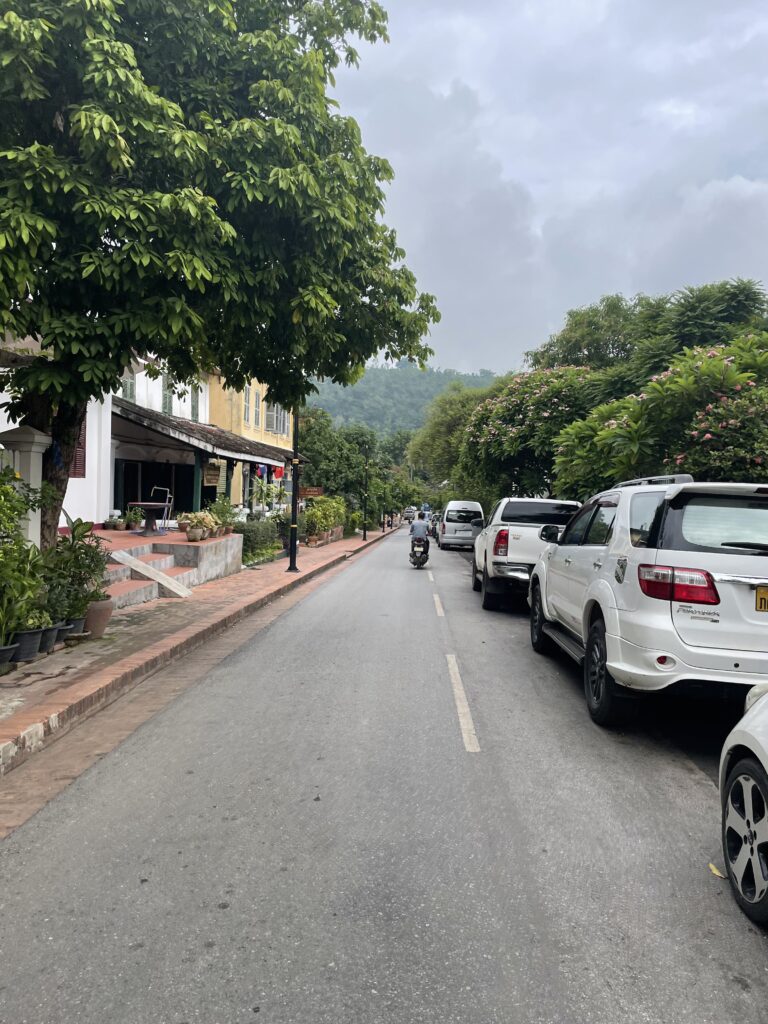
9 – Luang Prabang, a UNESCO Heritage City reminded me of Hoi An. My first stop in Laos was the town of Luang Prabang, a UNESCO world heritage site/town. It immediately reminded me a lot of another UNESCO town, Hoi An in Vietnam, possibly because both towns fuse well-preserved European colonial architecture with traditional architecture. It is a very pretty place to walk through and an easy place to spend 3-4 days. Did you know there are more than 300 UNESCO World Heritage Cities in the world?
10 – Sleepy and spacious. With a population of slightly over 7.5 million spread across 237,000 square kilometres, Laos is by no means a dense country. Everything is spaced far about. I found many places to feel a little “sleepy”, although this could be especially pronounced because I am coming from two very dense and electrifying cities in Hong Kong and Bangkok. I essentially went to three areas in my 9 days in Laos: (1) Luang Prabang, (2) Nong Khiaw and Muang Ngoy, and (3) Vang Vieng. In Nong Khiaw, Muang Ngoy and Vang Vieng, you will often find the locals operating multiple businesses. For example, the hostel owner would also operate the store across the road, and operate a separate laundry business. Also food, at least in places #2 and #3, takes a long time to get. I found it very humorous seeing the restaurant owner doing a grocery run to procure ingredients to make your order, after you make your order.
11 – Remember to Smell the Roses. On my first night in Laos, I met Sahara (Nepalese living in the US) on the top of Mount Phousi in Luang Prabang. Sahara is a person that is the complete opposite of me: naturally artsy, chill, spirtual, and social. In addition to her travel advice on Laos, I greatly enjoyed our conversations. When we were walking, she probably had to remind me 10x to slow down, noticing I walk at a brisk pace. “What is the rush, Colin?” I am very appreciative of her frankness and her constant reminder to slow down. I have minimal obligations in life right now, yet I still found myself walking fast, as if I had somewhere to be. I don’t think this is necessarily a problem, but when travelling it can be because you can miss the beauty that can be seen when taking it easier. Sahara’s comments and sleepy Laos is another reminder from the universe that it’s OK to take it easy, slow down, relax and to smell the roses. This was a theme the Law School counsellor also communicated to me. I think I can often come across as an intense person, and I still think of Sahara’s comments when I walk now. Laos is an easy place to slow down since it is, as I mentioned, very sleepy.
12 – Deep Travel. As I get older, I value “Deep Travel” more. Deep travel is about obtaining a deeper understanding and appreciation of a place’s culture, including the local way of thinking and living. Deep travel can be done in many ways, including understanding a place’s history (in addition to merely just seeing it) and meaningfully interacting with locals. It can sometimes be difficult when you want to see so many of the travel “hot spots” on a tight schedule, however it can still be achieved in a limited amount of time. Deep travel is a term my friend and I were discussing while completing the 70KM Jesus Trail in Israel, which is what I believe is a form of deep travel. It’s something I am more conscious of when I plan trips.
13 – Volunteering at Big Brother Mouse. Volunteering is a meaningful method of deep travel. While I have done some volunteering abroad before, namely teaching business in Kenya, integrating it into backpacking style travel is something I am not accustomed to. In Luang Prabang, I spent one morning volunteering with a school, Big Brother Mouse, conversing with local Laos children, teens and young adults in English, in an attempt to get them more comfortable with it. As a solo traveller, you especially appreciate friendly open people, so I was happy to have met a group of Singaporeans, from a charity club, also volunteering who brought friendly, fun vibes.
14 – Hmong people. One of the students at Big Brother Mouse was a 16-year old from Northern Laos. In our conversation I learned that he spoke 5 language, and was Hmong, which is an indigenous group of China. I first became aware of Hmongs while trekking in Sapa in Northern Vietnam several years ago. He taught me that Northern Laos is home to a sizable portion of the world’s Hmong population, behind China and Vietnam.
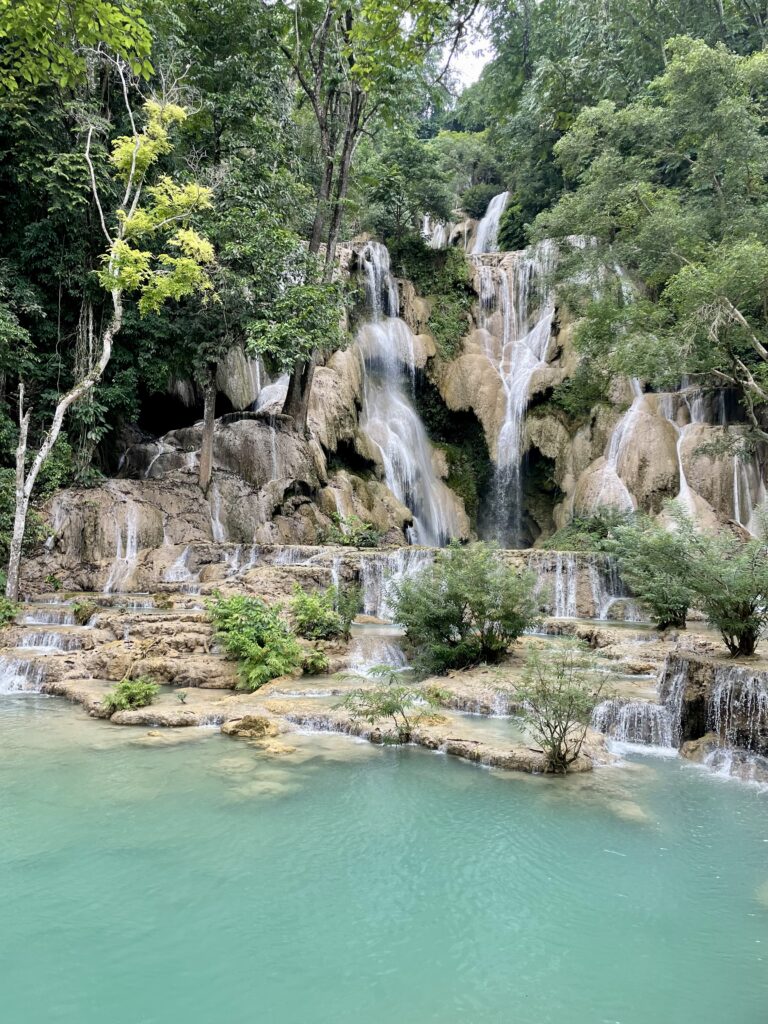
15 – Kuang Si Falls is worth the hype + Pro Tip. Kuang Si Falls will appear at the top of virtually all results of “Top Things To Do in Laos”. It is a picturesque multi-tiered waterfall worth all the hype! Here’s a Pro Tip passed on to me from Sahara, who in turn heard it from another traveller: once you reach the bridge at the bottom of the top waterfall, there is a set of stairs to the right that you go up. Walk up until you see the first “No Entry” sign, to your left. Walk past (behind) the sign for 3 minutes, and you will gain access to a private space. I spent the majority of my time at Kuang Si Falls at this private space. Boy, was it magical! It is safe, as long as you don’t get too close to the edge!
16 – Bumpy Roads. Unsurprisingly, the roads are pretty horrendous in Laos. I don’t think I’ve been to a place before where it’s so bad for as long stretches of a time. I was on the back of a cramped shuttle van for four hours and it was not a really fun ride. It’s so bumpy, my Garmin watch thinks I’m doing stairs.
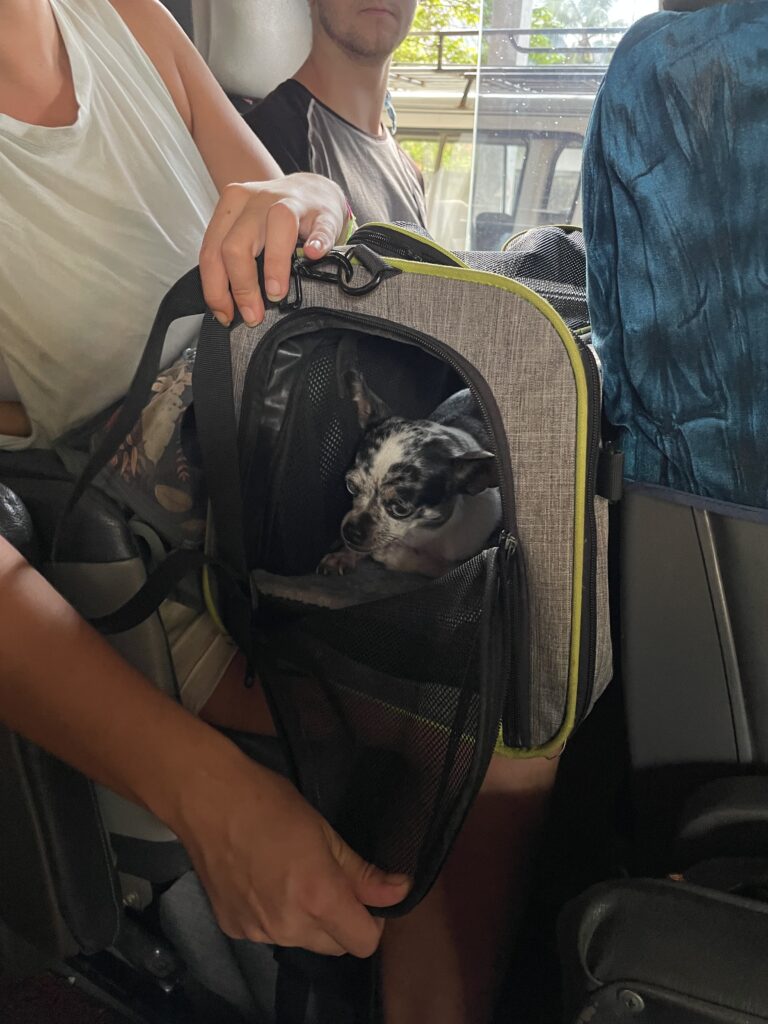
17 – Commutes while travelling = easy. A four-hour car ride in BC? Tough. A four-hour car ride in Laos [or anywhere abroad]? Easy. Long commutes feel easier when travelling. They aren’t as daunting because away from home, travelling is a form of productivity and is a necessity to do what you have to do (get to the next place). At home where you have all your home responsibilities, it is easier to get boged down into thinking about the other stuff you have to get done. On my Laos trip, I had many bus rides over three hours and it didn’t really faze me.
18 – Would you ever bring your pet travelling? On the van from Nong Khiew back to Luang Prabang, a traveller from France brought her three chihuahuas from back home with her. Apparently they have already visited four countries with her. I initially found this to be cute, but thinking through this further made me realize this is probably really stressful to the small dogs. To me, it would make a trip much less enjoyable having to worry about bringing my pets around, especially when there are so many stray dogs on the roads in Laos who can act unpredictably.

19 – Vang Vieng, Adventure Sport Paradise. Just as the look of Luang Prabang reminded me of Hoi An, Vietnam, the town of Vang Vieng reminded me a lot like La Fortuna/Arenal in Costa Rica. They are both places known for adventure sports…except Vang Vieng is a lot cheaper. Here I went to three blue lagoons (they have 6), each one bringing something different, kayaking, exploring caves, and the highlight was paramotoring over the unique Karst topography. Besides this, some popular activities I did not do here were ziplining, hot air balooning, tubing, and rock climbing. One traveller I met suggested I should do all the activities here as none were dissapointing, but at this point of my trip (Day 7-9), I was quite tired and in the mood to chill.
20 – Balancing Outdoor Adventure with History and Culture. As I finish my outdoors-adventure, adrenaline-fueled time in Laos, I am keen to mix things up at my my next stop, Cambodia, a place known for temples and it’s ruthless history. As I get more into this post-grad trip, finding balance in my activities and days is becoming more important.
21 – It’s Hot! Oh…also, it’s VERY hot. It’s one of the hottest months to visit and also can be quite rainy some days, hence it is “low season” or “off-tourist” season, which can explain some of the the quietness. Hikes, even those that are short in duration (<90 minutes) are quite hard on my body. In Bangkok and Laos, I developed a heat rash and heat-induced eczema on my arms that I had to get checked out at a clinic as I was concerned. Thankfully, it looks like it’s gotten better!
My 9 Day Laos Itinerary
You will find many itineraries online that have a lot more context and information than this one. If you’re looking for a barebones itinerary, this will help!
A. 3-4 Days in Luang Prabang
After arriving at the Luang Prabang airport (from Bangkok), I spent 3-4 days doing the following:
- Sunset hike up Mount Phousi
- Dinner and Leisurely walk through the Night Market (multiple nights)
- UXO Lao Visitors Centre
- Kuang Si Falls
- Volunteering at Big Brother Mouse, helping Lao locals learn English
- Seeing the Morning Alms with the Monks
- National Museum of Luang Prabang (and former Royal Palace)
- Of course, two massages!
I found that I still had time to relax after fitting the above in. Activities I didn’t do that you can also consider doing: Pak Ou Caves, Bowling (this is the only place open past 11PM and popular among travellers), Tat Sae waterfall.
B. 2 Days in Nong Khiaw Area
I took an early shuttle van up north to the tinier village of Nong Khiaw (3-4 hours), which felt very untouched, although appears to be growing rapidly. I recommend if you like something that still feels a little less touched by tourists. Here, there were only a few pockets of tourists. Over 2 days/2 nights, I did the following:
- Sunset hike up to Nong Khiaw Viewpoint (Pha Daeng). It was very muddy and not a great idea to hike in the dark on the way down! But we had a celebratory feast after.
- We booked a private boat to take us up north the following day where we saw Tae Daw Falls, spent a lot of time relaxing at Yensabi Organic Farm & Cafe (HIGHLY recommend), and going to Muang Ngoy, where we had a late lunch and hiked up to a viewpoint up there.
- Ended our time up North with a meal at Mr. Wan’s Place. The owner is very nice but likes to take his time. The people I was with waited over an hour for lime juice.
C. 3 Days in Vang Vieng
I then made my way down to Vang Vieng, another adventure capital spot. Here, I:
- Hiked up to Nam Xay Viewpoint, which has the famous motorcycles planted on top. What a great picture spot!
- Hopped on the bike of a new friend’s motorbike and explored Blue Lagoons 1, 2, and 3. I think there may be up to 6 Blue Lagoons in the area. My favourite was #2 as it is the most peaceful, however each have something fun and unique to offer. #1 is the most busy but has the most energy (and Chinese spectators filming you). #3 has the most fun obstacles, such as a zipline into the water.
- I went kayaking down a river and tubing into a cave.
- I went paramotoring (failed at timing it around sunset) but what an experience! This was a highlight!
I decided to skip the Laos capital of Vientaine as I didn’t hear many exciting things about it. Next stop: Cambodia!
